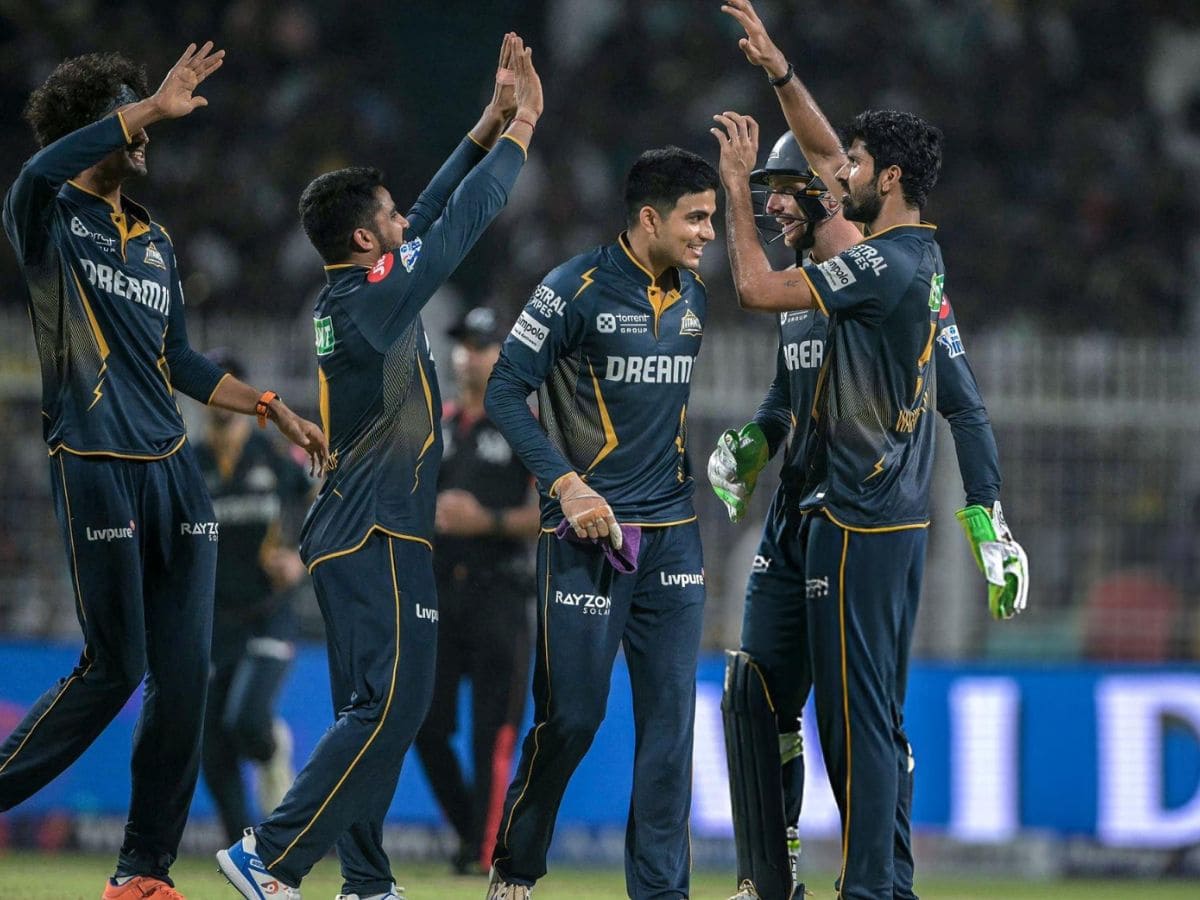Samsung Galaxy Tab S10 FE
MSRP $500.00
“The Samsung Galaxy Tab S10 FE doesn’t want to replace your laptop and is better for it. It handles the classic, fun tablet tasks well, whether that’s games or video, and has the right software and durability specs so it’ll last for years.”
Pros
- Stylus included
- Excellent split-screen app mode
- Long software update support
- IP68 rating
- 45W wired fast charging
Cons
- Haphazard 90Hz refresh rate
- Software can be very phone-like
- Fiddly fingerprint sensor
I’ve been using the Samsung Galaxy Tab S10 FE tablet as my primary media tablet for the last week or so, and it’s time for me to share everything I like about it, along with the few disappointing aspects. Before we start, it’s important to understand this isn’t a laptop replacement or a high performance tablet ready for anything. It’s aimed squarely at casual use, and often feels like a massive phone more than a compact laptop because of it. Does that ruin the Galaxy Tab S10 FE, or is this classic style part of its appeal? Let’s find out.
Specs
| Dimensions | 165.8 x 254.3 x 6mm |
| Weight | 497 grams |
| Durability | IP68 |
| Screen | 10.9-inch IPS LCD, 2304 x 1440 pixels |
| Processor | Samsung Exynos 1580 |
| RAM and storage | 8GB/128GB or 12GB/256GB |
| Camera | 13-megapixel rear camera, 12MP front camera |
| Battery | 8,000mAh |
| Charging | 45W wired charging |
| Software | Android 15 with Samsung One UI 7 |
| Colors | Black, white, blue |
| Price | From $500 |
Samsung Galaxy Tab S10 FE: design

I use tablets mainly for media and games, which means they should be manageable to hold, not too heavy, and preferably have a screen and processor suited to these uses. The Galaxy Tab S10 FE leans more towards this than it does work or productivity. It does not come packaged with a keyboard case, although you can buy these separately.
At 487 grams it’s really easy to carry around with you, far more so than a laptop, and because it’s so thin — just 6mm — it doesn’t take up much space in a bag. The 10.9-inch screen is just right, and avoids the giant size of the Galaxy Tab S10 FE+ which has a 13.1-inch screen. Looked at like this, the tablet is great for home and occasional outside use, but there are some ergonomic issues that frustrate.

The thin chassis isn’t very comfortable to hold, and it really notices when you play games for an extended period. The corners are quite sharp, and can dig into your palm. I found myself trying to find a way to rest the tablet on something after a while. The tablet comes in three colors — black, white, or blue — providing a decent choice, but the rear panel gets covered in smudges and fingerprints really quickly.
The other frustration is the fingerprint sensor, which is housed inside the power button on the side. It’s accurate and reliable, but it’s a pain to locate as the button is quite small and mounted on a very thin chassis. Registering at least two fingerprints is essential, otherwise you’re always juggling the tablet while you try and feel for the sensor. That said, it’s great to see Samsung has engineered the Tab S10 FE to meet an IP68 dust and water resistance rating, the tablet doesn’t have any noticeable flex in the chassis, and the blue color is the one to choose as it does give the anonymous design some character.
Samsung Galaxy Tab S10 FE: screen and performance

Samsung has chosen a 10.9-inch IPS LCD screen for the Galaxy Tab S10 FE, and not one of its AMOLED screens found on high-end Samsung models. I don’t think it matters drastically, provided you’re not really examining video performance. During general use the screen looks great, plus it gets bright enough to see outdoors in decent light, but contrast, colors, and black levels aren’t as crisp and deep as they are on AMOLED screens.
| Geekbench 6 CPU (Single) | Geekbench 6 CPU (Multi) | Geekbench 6 (GPU) | |
| Samsung Galaxy Tab S10 FE (Samsung Exynos 1580) | 1365 | 3895 | 6925 |
| Google Pixel 9 Pro Fold (Google Tensor G4) | 1052 | 3239 | 6474 |
| Samsung Galaxy S24 Ultra (Qualcomm Snapdragon 8 Gen 3) | 2314 | 7104 | 15898 |
I can live with the LCD performance, but the problem with the Tab S10 FE’s screen is the haphazard way it applies its 90Hz refresh rate. The Settings menu enables either a 60Hz or Adaptive mode, with no way to force 90Hz to apply permanently. In Adaptive the software favors 60Hz and routinely applies it in situations where 90Hz would be preferable, such as browsing the Reddit app and Chrome. It’s annoying, and with no way to override it, something you can’t do much about.

A Samsung Exynos 1580 processor with the option of 8GB or 12GB of RAM powers the tablet, and my review model has 8GB. This is the same chip found in the Samsung Galaxy A56 smartphone, so don’t expect Galaxy S25-levels of performance here. On the positive side it doesn’t run hot even when playing games for a while, and it has no problem with games like Asphalt Legends: Unite, provided you don’t max out the graphics settings.
But its mid-range ability shows up the more you use the tablet, as system navigation and app opening can take a beat longer to happen than you expect. It’s certainly not slow, but it doesn’t have that rocketship instantaneous response some may be used to from their phone, particularly if you use one with a Qualcomm 8-series chip. The performance is adequate for general use, and provided you don’t expect anything beyond this, you’ll probably rarely notice its shortcomings. The screen’s refresh rate issues are far more likely to irritate.
Samsung Galaxy Tab S10 FE: software

Does the Exynos 1580 clip the software’s performance too much? No, Android 15 and One UI 7 is otherwise perfectly usable, and unless you are coming from a more powerful device, you may not even notice the tiny hesitations. It handles the Galaxy Tab S10 FE’s excellent multiscreen features without a problem, and I love how easy they are to activate. It’s a set of logical swipes, or a couple of taps when in the helicopter view, and you’ve got up to three apps running at the same time on the screen. Use Samsung’s Good Lock app, and you can force apps not designed for split screen use to work.
Unfortunately, One UI 7 is inconsistent in its design on the Galaxy Tab S10 FE. There are various situations where One UI 7 looks, feels, and operates like software designed for a phone, and simply jammed into a tablet rather than adapted for it. It bothers me the desktop icons don’t arrange themselves neatly and normally when switching between landscape and portrait orientation, and the Settings menu will often tell you to do things with your “phone” and not tablet for example. But at other times, such as the sensible use of space in the Settings menu and the split notification and Quick Settings menu designed for one-handed use, it works well.

Samsung hasn’t stuffed the software full of AI, with some photo tools — Best Face, Object Eraser, and Auto Trim for example — and its Read Aloud feature for webpages. It’s surprising not to find more Galaxy AI features in the Summarize genre, which would likely be more useful when using Samsung Notes. If you want AI, you’re going to have to get one of Samsung’s more expensive tablets or smartphones. One considerable benefit from the Tab S10 FE’s familiar software is, if you’re coming from a recent Samsung smartphone you’ll feel right at home using it, as it really is almost identical. Samsung’s supporting it for six years with major OS and security updates, and because I’d expect people to keep it for longer than a smartphone, this is a welcome benefit.
Samsung Galaxy Tab S10 FE: camera and stylus

There’s a single 13-megapixel camera on the back of the Galaxy Tab S10 FE, which is likely there mostly for business use, and a 12MP front camera set in the screen’s modest and delightfully symmetrical bezel. It’s placed for use in portrait orientation, and is fine for video calls. It’s simple though, and misses out on fun video call features like Center Stage — where the front camera ensures you stay in the frame, even when moving around a little — which make the Apple iPad unique.
Inside the Galaxy Tab S10 FE’s box is a basic S Pen stylus, and it’s one of the best things about the tablet. It works immediately without any need to pair it or ever recharge it, and while there’s no slot to store it inside the tablet, it does magnetically attach to the side of the chassis. It works throughout the operating system, and with all the apps and games I’ve tried. There’s something really satisfying about using it in games like Magic: The Gathering Arena.
It’s also at home inside Samsung Notes where handwriting is accurately and speedily recognised, but there’s not much feel to the experience. It’s very obvious you’re “writing” on glass, and I expect keen artists would find the lack of feedback and tactility limiting. However, everyone else will find it useful in some capacity, and it’s great to see it included in the package. Samsung does sell a more sensitive, feature-packed $100 S Pen stylus too.
Samsung Galaxy Tab S10 FE: battery and charging

An 8,000mAh battery in a 10.9-inch tablet sounds a little on the small size, doesn’t it? You’re not wrong, and although Samsung claims 20 hours video playback from a single charge, general mixed use including gaming will see it expire after eight or nine hours. It means the tablet will last a few days with around three or four hours screen time. Good, but not stellar.
The Exynos 1580 works quite hard too, and the efficiency of many high-end Qualcomm processors inside Samsung’s top smartphones is missing. The battery lost 15% of the battery in 45 minutes playing Magic: The Gathering Arena, and 5% after a 25-minute YouTube video at 1440p, plus the 3DMark benchmarking app’s 20-minute stress test reduced the battery by 8%. This gives you an idea of how it will perform if you play highly graphically intensive games.
Like the Galaxy A56 and Galaxy S25 Ultra, the Galaxy Tab S10 FE gets 45W fast wired charging. A full charge takes around 100 minutes, which is acceptable considering the battery’s capacity, but you don’t get a wall charger in the box.
Samsung Galaxy Tab S10 FE: price and availability

The Samsung Galaxy Tab S10 FE costs $500 for the 128GB model, or $570 for the 256GB version. Don’t fret too much about getting the model with additional storage space, unless you really want 12GB of RAM, as the Galaxy Tab S10 FE has a MicroSD card slot which accepts cards up to 2TB in size. In the U.K. the Galaxy Tab S10 FE costs 500 British pounds for the 8GB/128GB version, and 600 pounds for the 12GB/256GB model.
Samsung’s tablet range lacks sensible progression. The next step up from the Tab S10 FE is either the 11-inch Galaxy Tab S9 for $920, or the 12.4-inch Galaxy Tab S10+ for $1,000, which are considerable jumps in price. It does provide a sideways step with the bigger 13.1-inch Galaxy Tab S10+ FE for $650, if the screen on the normal S10 FE isn’t large enough.

It’s OnePlus which offers the best upgrade if the Galaxy Tab S10 FE isn’t powerful enough for your needs. The OnePlus Pad 2 has a 12.1-inch LCD screen, a Qualcomm Snapdragon 8 Gen 3, and comes in a 12GB/256GB configuration for $550. You don’t get a stylus included, and the software isn’t quite as good as One UI 7, but it’s excellent value. I’d also be really tempted by the $450 256GB Apple iPad if you aren’t bothered about Android.
Should you buy the Samsung Galaxy Tab S10 FE?

The Samsung Galaxy Tab S10 FE is a “classic” fun tablet, in that it’s great for media and general use. This is not a work machine, isn’t for editing 4K video or anything so niche, and I like it due to this honesty. If you’re already a Samsung smartphone owner the Galaxy Tab S10 FE is a great as the software will be familiar, there are tools such as Quick Share which sync the two devices together nicely, and you’ll be able to use the same Samsung account on both. Even if you own another Android phone, the Galaxy Tab S10 FE is a well made, durable, and capable enough tablet to be used every day, for most tasks.
If you have no such brand allegiances, it’s hard not to recommend the Apple iPad instead, particularly as one can be purchased for $350 if you’re not worried about storage space. The OnePlus Pad 2 is also a great buy if you don’t mind spending a little more than the Galaxy Tab S10 FE. The saving part of Samsung’s newest tablet is the stylus, which neither of these include in the cost.

I’ve been very satisfied with the Galaxy Tab S10 FE. Yes, it does feel like a massive phone on occasion, but videos look good, games play well, the software is easy to use, and the S Pen stylus can be used to get creative. However, I do think there’s better value tablets either side of it when looking only at price, and the Galaxy Tab S10 FE does struggle with a solid reason to buy outside of the stylus. If Samsung is your brand of choice, and you aren’t planning to work on your tablet, then you’ll be happy with the Galaxy Tab S10 FE though.




















































